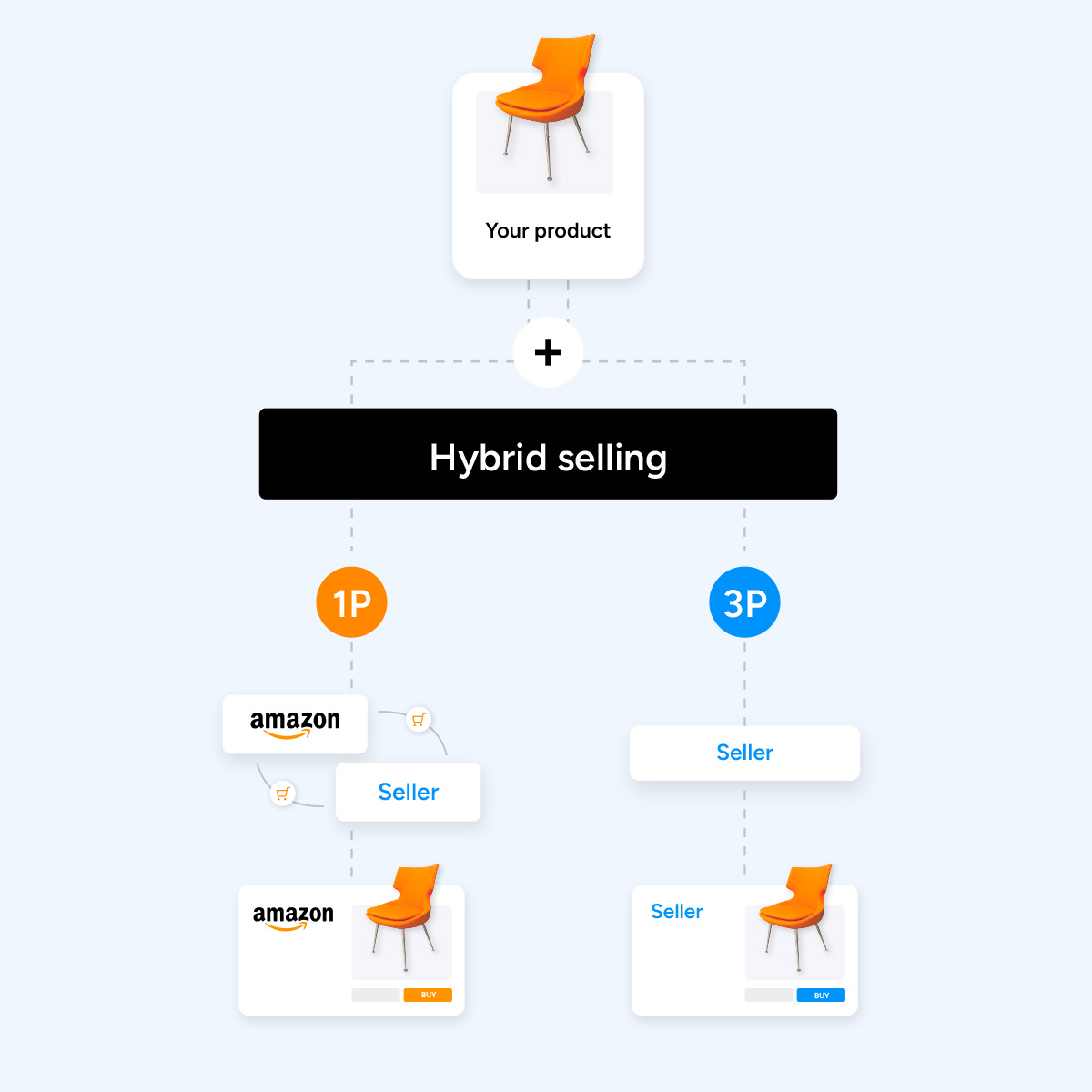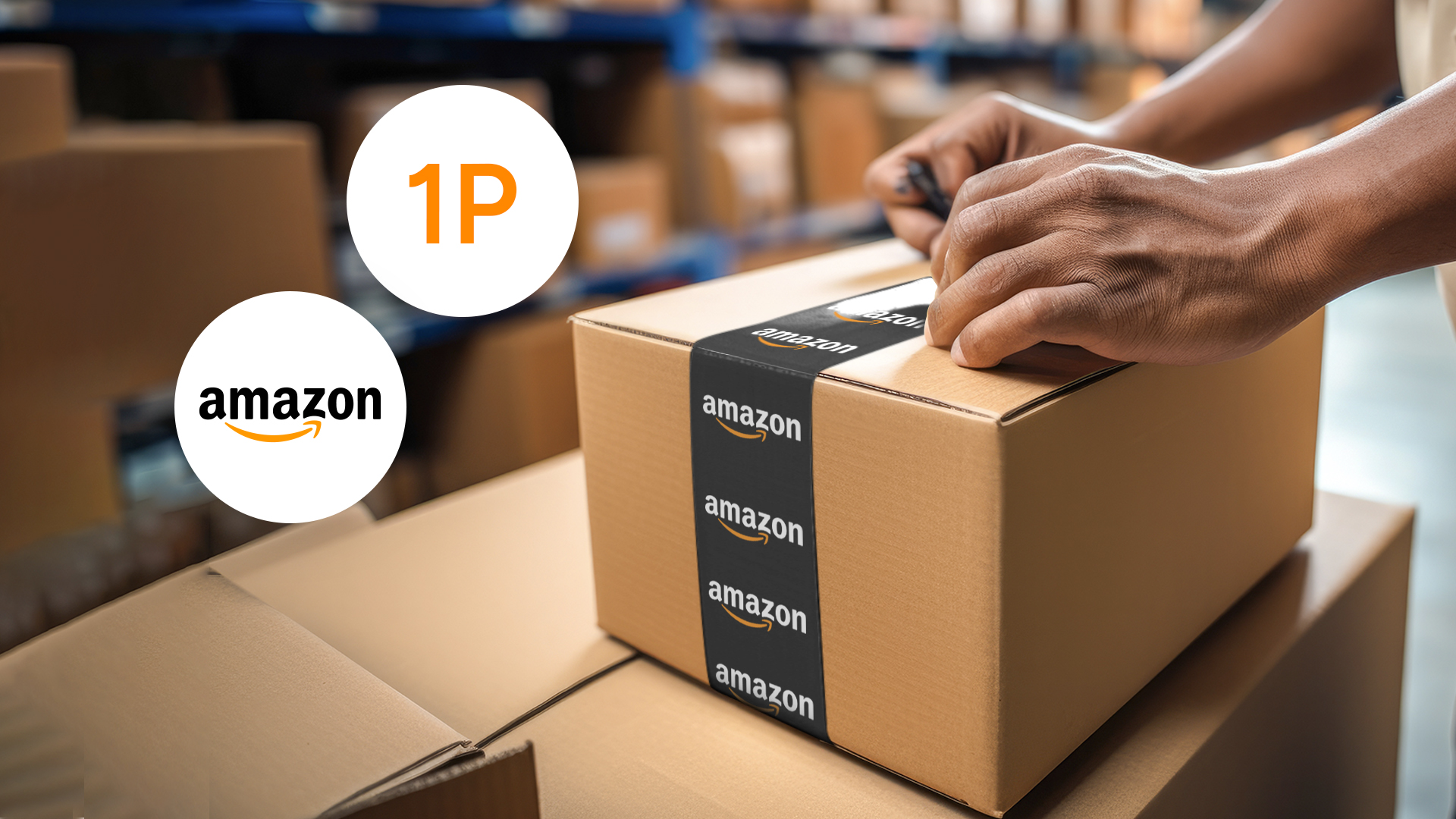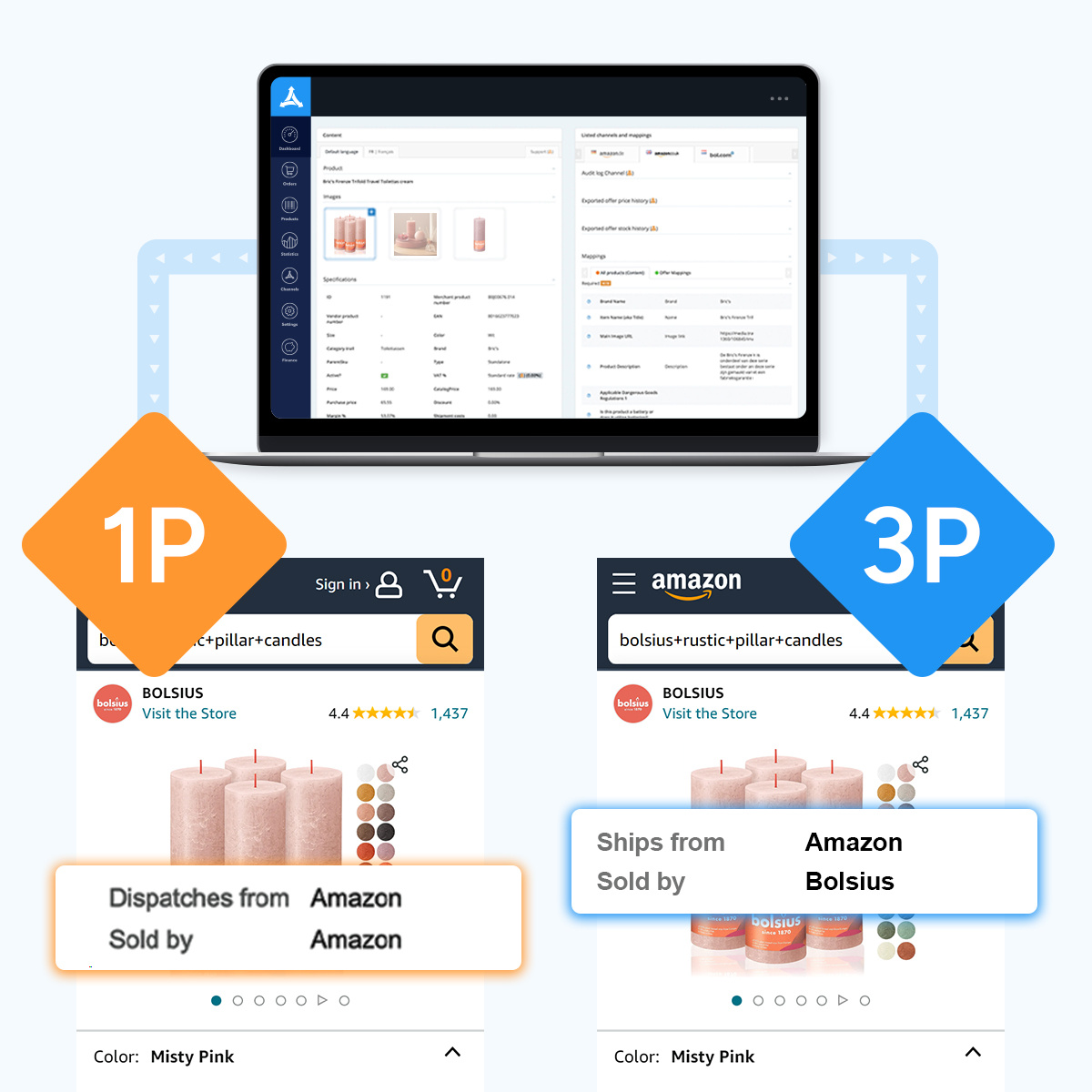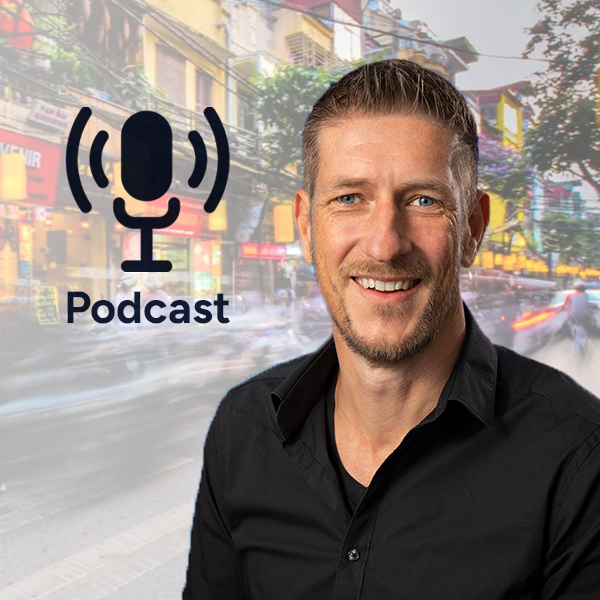-
Home
- How to make a Hybrid Selling approach work for you
Embrace a hybrid selling model to maximize sales on Amazon

What is a hybrid selling model?
What is a hybrid selling model?

A hybrid selling model leverages the strengths of both first-party (1P) and third-party (3P) selling on marketplaces like Amazon.
For 1P vendors, it provides the flexibility to switch between these models, maximizing sales and adapting to market changes.
This strategic approach combines the simplicity of 1P selling with the complete control offered by 3P selling. By adopting a hybrid model, you can:
✅ Increase sales and margins by combining both models
✅ Safeguard your 1P relationship with Amazon
✅ Maximize profits by controlling your 3P pricing
✅ Backfill orders when Amazon 1P stock is not replenished
✅ Switch between 1P and 3P selling in minutes
Overcoming 1P challenges
with a hybrid selling model
Overcoming 1P challenges
with a hybrid selling model

A hybrid selling model helps Amazon 1P sellers tackle common challenges by combining the strengths of both 1P and 3P approaches. Here’s how ChannelEngine can help:
Dependency on Amazon's Purchasing Decisions: Reduce reliance on Amazon's reorders by also listing and selling products directly to consumers through the 3P model. ChannelEngine enables direct listing on Seller, keeping products available even without Amazon's reorder.
Pricing Control: Maintain control over pricing and protect brand value by setting and adjusting prices through the 3P channel. ChannelEngine offers advanced pricing strategies and automation tools for competitive pricing.
To better understand how this approach can benefit your brand, take a look at this hybrid selling infographic, which provides a snapshot of why hybrid selling is so effective.
Leverage the power of hybrid selling
with ChannelEngine
Leverage the power of hybrid selling
with ChannelEngine

ChannelEngine is designed to facilitate your hybrid selling strategy. Our platform's Seller Hub and Vendor Hub enable you to manage both 1P and 3P sales on Amazon and other marketplaces from a single environment:
Vendor Hub (1P): Automate and optimize your 1P marketplace business.
Seller Hub (3P): Automate and optimize your 3P marketplace operations.
Combining these solutions allows you to maximize sales and respond swiftly to changing market demands.
The rise of hybrid selling
The rise of hybrid selling
With 74% of Amazon brands opting for a hybrid model in 2023, the need for adaptability in the current market is evident. The versatility provided by a hybrid 1P and 3P selling model is vital for growth and profitability, especially given the frequent changes in algorithms and product priorities on platforms like Amazon and Bol. This trend underscores the importance of a flexible approach in the evolving landscape of multichannel ecommerce.
Maximize your sales potential on marketplaces
With ChannelEngine, you can effortlessly switch between the Vendor Hub and Seller Hub to manage your marketplace operations across the board from a single platform. This allows you to optimize your sales strategy and manage your inventory more efficiently:
Hybrid selling in practice
Hybrid selling in practice

Watch ChannelEngine's CEO, Jorrit Steinz, speaking about strategies brands should consider when selling through Amazon Vendor (1P), as an Amazon Seller (3P), and how a hybrid strategy of both 1P and 3P is essential.
Beyond Amazon:
Explore more marketplaces
Beyond Amazon:
Explore more marketplaces
ChannelEngine’s extensive marketplace offering allows you to explore 3P or direct-to-consumer (D2C) approaches beyond Amazon.
Access hundreds of marketplaces and online sales channels through a single platform where you can manage and automate your product content, pricing, orders, and inventory.
Our team of marketplace experts is ready to assist you in discovering the proper hybrid selling setup for your ecommerce business.
Go hybrid with ChannelEngine
Embrace the powerful combination of 1P and 3P selling with ChannelEngine. Increase your sales opportunities, optimize your inventory management, and uncover your ideal hybrid selling strategy.

Niels Floors
VP of Strategic Development










.png?width=220&height=88&name=lg%20(1).png)
